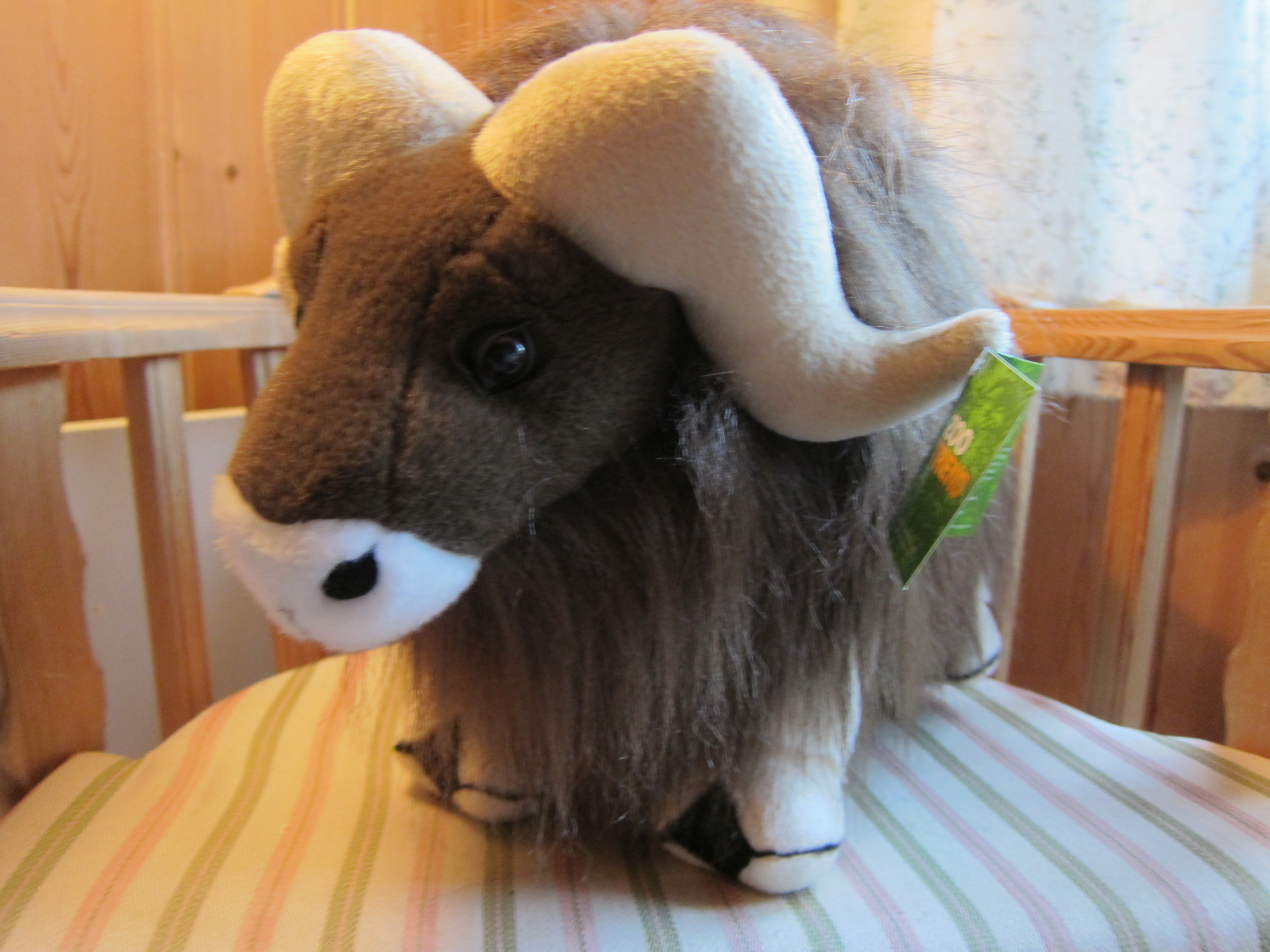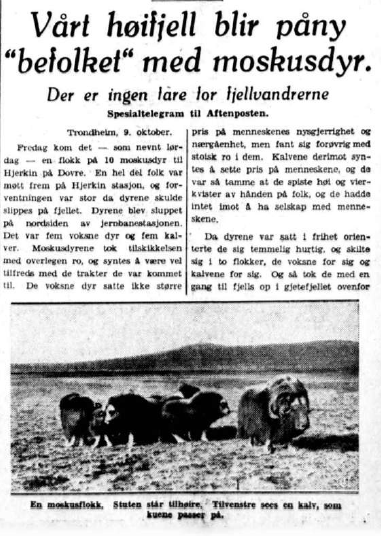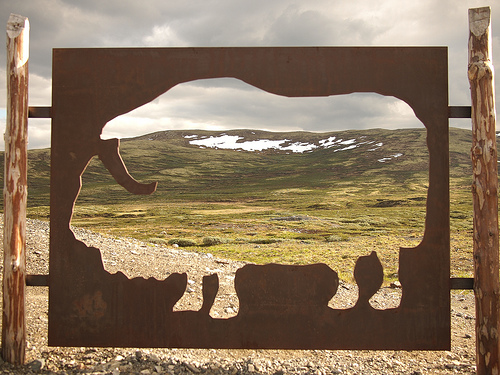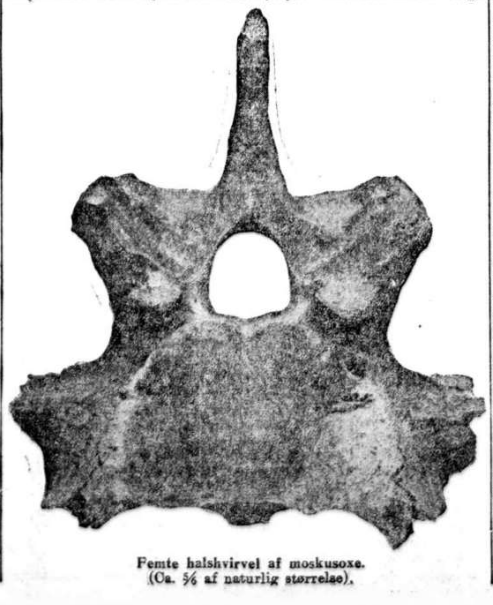
Past and future together
At the ESEH 2013 conference last week in Munich, I gave a paper titled “The past is the future: The reintroduction of muskox in Norway”. In that talk, I focused on the ways that natural history has been mobilized within reintroduction discourse. The muskox is a peculiar – and enlightening – case of how the past matters to the present and future.

You see, muskox have not been in Europe for a very long time, at least several thousand years. But in May 1913, a neck vertebra was found during the construction of the railway line through the Dovre mountains. A spinal vertebra was found later in November 1913 on the construction site. Both were identified by scientists as muskox bones. Although the period of deposition was not clear because of the nature of the construction site, the lead investigator P. A. Øyen from the Oslo University Geological Museum assumed that it must have been deposited during the last interglacial period.
When Adolf Hoel proposed to bring muskox to Svalbard in 1929 and later to Dovrefjell in 1932, this history was not mentioned in the press. Instead, the justification for bringing muskox from East Greenland was (1) potential meat production and (2) scientific study to aid in their conservation on Greenland.
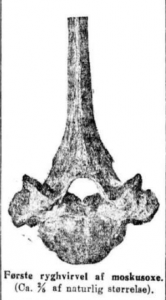
Hoel did, however, write an unpublished manuscript in 1933 which I found at the Norwegian Polar Institute archive this summer in which he mentions the paleoarcheological finds as justification for the reintroduction, saying Dovre was a good choice not only because of environmental similarity but also because “muskox lived in this area in recent geological times” based on the neck vertebra find.
After that point several newspaper articles point out that Dovre is the appropriate place to reintroduce muskox because of the bone finds. For example, this translated excerpt from a 1940 article titled “Dovrefjellenes nyeste pryd – Moskusdyrene trives godt”:
The species is in fact old in Norway. In prehistoric times they were found in Europe and here they were around the Dovre area – during construction of the Dovre railroad, a bone of a muskox was found.
This history of the muskox continues to be integral part of the storytelling about its reintroduction. For example, in 2012, the Norwegian television program “Norsk attraksjon” featured a muskox segment which used the 1913 find as the beginning of the historical look back at how the muskox came to the Dovre mountains.
But not everyone has agreed that the history of the muskox based on a couple of bones thousands of years old means it should be in Norway now. In the talk, I mentioned the Norwegian Black List of Invasive Species from 2007 which recognizes that the muskox was in Scandinavia after the last ice age then died out in Europe 3,000-4,000 years ago, yet still classifies it as an alien species (“fremmed art”) because it was “introduced” and has “not been naturally in the country for several thousand years”.
I argued that, in the end, the muskox’s past presence is ambiguous as a justification for why it should be in Norway in the future, but its current cultural integration, which I have discussed before on this blog, may trump that disagreement altogether. Is the past the future? We’ll have to wait and see.


